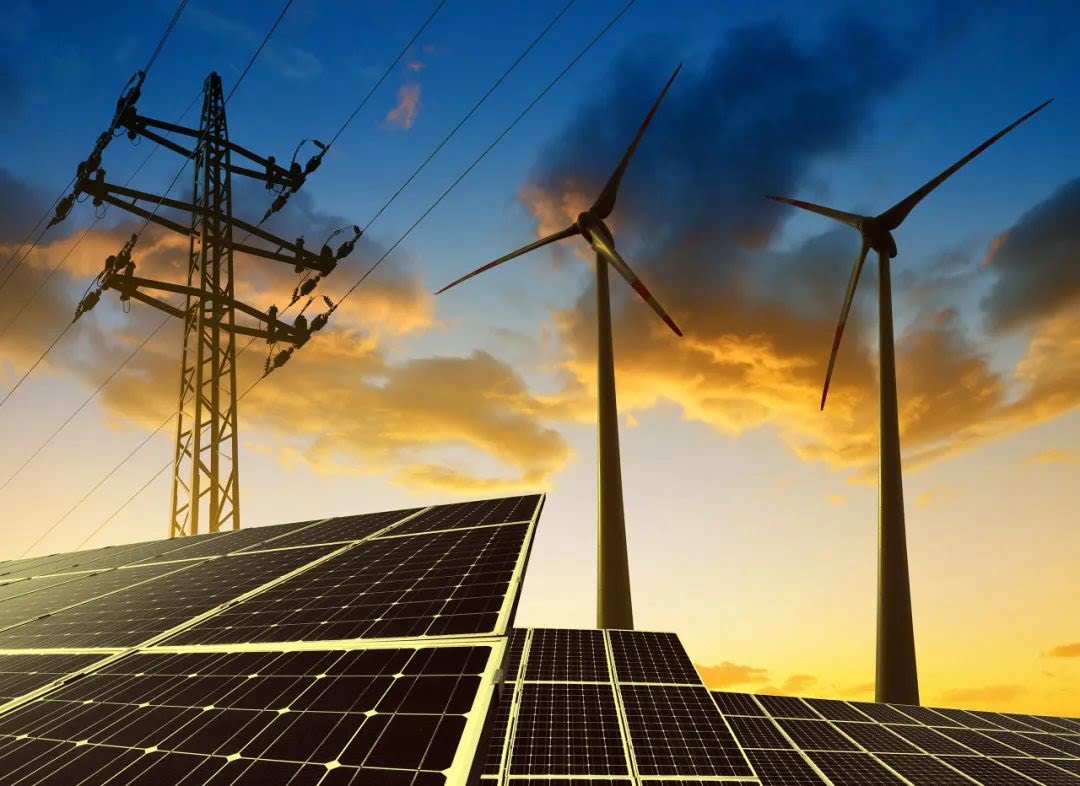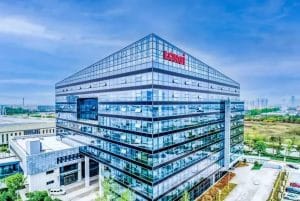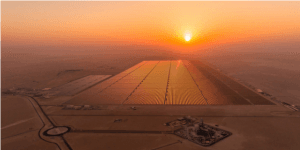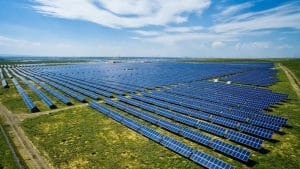In the past few months, the photovoltaic industry has been changing rapidly.
On the one hand, some small companies have been exposed to insolvency, lawsuits, bankruptcy reorganization, and delisting at par value; on the other hand, industry giants have fought patent wars, laid out the Middle East market, and made large-scale acquisitions. The risk resistance of the two is in sharp contrast.
However, the length and depth of this round of cyclical adjustment are worrying. On August 22, Wang Jian, an analyst at TrendForce, told a reporter from China Business News that the process of clearing the photovoltaic market is complex and full of uncertainty. It is an inevitable trend that some companies will be gradually eliminated due to their disadvantages in capital, technology, and production capacity. The merger and reorganization of large companies is also accelerating market integration, but the clearing cycle exceeds previous expectations.
“On the one hand, market demand is full of uncertainty, which requires industry leaders to be more cautious and flexible in formulating strategies to cope with market changes; on the other hand, the government’s support or assistance plans for some companies can avoid large-scale bankruptcies in the short term, but may also delay market clearing. In the future, the process of market clearing may last for a long time, and companies need to pay attention to risk management while maintaining technological and market leadership.” Wang Jian said.
Low-price competition continues
“To be honest, now it’s all about who has the cheapest price.” When talking about the current market situation, Li Ming (pseudonym), overseas market director of a first-tier photovoltaic company, told reporters. In his opinion, product prices occupy a very important position in the current corporate competition, and this price situation that falls below cost or has a small profit is estimated to be reversed by next year.
For more than a year, price reduction has been the main theme of the photovoltaic industry. In order to compete for orders, companies continue to drop component prices.
Third-party data shows that the TOPCon components of centralized and distributed photovoltaic projects in the current domestic market have fallen below 0.8 yuan/W, and the execution prices of the two are as low as 0.71 yuan/W and 0.77 yuan/W respectively. In foreign countries, the execution price of TOPCon components in Europe is 0.085~0.11 euros, and the execution price of newly delivered TOPCon components in the United States is about 0.23~0.28 US dollars. Compared with the beginning of 2023, N-type photovoltaic components have entered the “7 cents era” per watt, with a drop of nearly 60%.
In the “involutionary” low-price competition environment, photovoltaic companies are not only forced to passively reduce prices, but also face the risk of “bad money driving out good money”.
Li Ming said: “The company is unwilling to engage in price wars. Unfortunately, it can only passively reduce prices in the competition, but each price reduction will be later than the opponent, and it is inevitable to lose some market share. At present, the entire industry is basically losing money, and some companies are sacrificing product quality at the cost of grabbing orders at low prices, ignoring the healthy and sustainable development of the industry.”
Li Ming also told reporters that at this stage, not only who has greater production capacity will lose more, but whoever insists on quality will also lose more. For example, some companies are unwilling to lose too much and can save as much as possible, reduce the use of high-quality materials, lower operating standards, and bring quality risks. Some companies also falsely mark the power. For example, a component marked 585W may actually be 570W.
When the entire industry is generally losing money, whether the product quality can be guaranteed has attracted the attention of end customers.
InfoLink Consulting, a third-party consulting firm, pointed out: “In a period of intensified competition, quality will be the top priority in the future. Domestic and foreign end customers have paid attention to quality inspection issues, and some domestic end customers have also begun to actively discuss the evaluation of changing the scoring mechanism.”
Not only that, low-price disorderly competition also has an impact on photovoltaic exports.
The Photovoltaic Branch of the China Chamber of Mechanical and Electrical Engineering pointed out in a document: “Based on the annual export volume of photovoltaic modules of 300GW, this has led to a foreign trade loss of about 300 billion yuan. While enjoying China’s low-priced and high-quality photovoltaic products, key export markets such as the United States and Europe have accused China of overcapacity and low-price dumping, using trade means to restrict my country’s photovoltaic product exports, seriously affecting the high-quality external development of my country’s photovoltaic industry.”
Behind the low-price competition is the problem of phased and structural mismatch of photovoltaic capacity supply and demand, which urgently needs to be cleared.
TrendForce data shows that the module production capacity is expected to reach 1404GW and 1544GW in 2024 and 2025 respectively, of which the TOP10 module companies have a capacity of about 836GW, accounting for nearly 60%, enough to cover the terminal installation demand.
Dr. Chen Yifeng, Vice President of Trina Solar (688599.SH) and Deputy Director of the National Key Laboratory of Photovoltaic Science and Technology, made three suggestions: First, industry associations should play a guiding and coordinating role, and leading companies should take on some responsibilities, unite and compete in a healthy manner; second, local governments and financial institutions should get involved to limit the continued expansion of low-end production capacity that lacks technological content; third, the entire industry should respect innovation, especially protect intellectual property rights, and promote the healthy and sound development of the industry.
Patent war builds a high moat
If the price war is just a prelude to the competition under this round of photovoltaic industry crisis. Since entering 2024, the competition has further escalated into a patent war.
In June 2024, the Shanghai SNEC Photovoltaic Exhibition and the Photovoltaic Industry Chain Digitalization and Intellectual Property Development Seminar were held successively. During this period, photovoltaic companies conducted in-depth reflections on the driving factors behind the current industry crisis and formed a consensus on relying on innovation, respecting and protecting intellectual property rights.
Before and after this, patent disputes between photovoltaic companies have come.
In June, Trina Solar accused Changshu Canadian Solar Sunshine Power Technology Co., Ltd. and Wuxi Yuncheng Power Technology Co., Ltd., subsidiaries of Canadian Solar (688472.SH), of TOPCon technology infringement. Not only that, Trina Solar has also sued Zhongqing Photovoltaic and Runyang Shares for patent infringement around TOPCon technology.
According to reporters, in July, JA Solar (002459.SZ) filed two TOPCon technology patent infringement lawsuits against Chint New Energy and its European related companies in Munich and Hamburg, Germany.
Compared with Trina Solar and JA Solar, JinkoSolar (688223.SH) has already established patent barriers by collecting patent fees through authorization.
JinkoSolar revealed in August that in January 2024, JinkoSolar officially announced that it would collect patent license fees for TOPCon technology. Currently, one of the top ten global component manufacturers and one of the top five global battery manufacturers have paid patent license fees to JinkoSolar.
JinkoSolar Vice President Qian Jing said that JinkoSolar attaches great importance to the strategic value of patents, and tries to avoid falling into a patent war that is time-consuming and labor-intensive through authorization, cross-licensing, patent pools, etc. At the same time, she also said that unauthorized and improper use must be resolutely cracked down.
Since 2024, the mainstream technology trend of the photovoltaic market has changed, and the production capacity of battery components is mainly concentrated in TOPCon technology, which is also the focus of the above-mentioned patent war. JA Solar Technology people told reporters that the key patents surrounding TOPCon technology are basically in the hands of JA Solar, Trina Solar and JinkoSolar.
Wang Jian told reporters that behind patent wars are often fierce competition for market share among enterprises. Through patent litigation, they restrict competitors’ right to use and thus gain unique competitive advantages in the market. To avoid legal disputes, enterprises will increase investment in research and development, seek new technical paths or improve existing technologies to promote further development of technology. In the long run, due to the high cost and uncertainty of litigation, small enterprises may not be able to withstand the pressure of patent wars and be forced to withdraw from the market or be acquired by large enterprises, which will accelerate the integration and reorganization of the market.
Today, the above patent disputes have not been settled, but the dispute over the mainstream technology in the future continues.
In the view of the three companies claiming rights, TOPCon will still be the mainstream of photovoltaic technology in the next five years. JinkoSolar and Trina Solar believe that the vitality of TOPCon and perovskite stacking will remain strong in five years. However, Longi Green Energy (601012.SH) believes that there is a risk of oversupply of TOPCon, and BC technology will be the mainstream of the market in the next five years or so.
In the past two years, Longi Green Energy and Aixu Technology (600732.SH) have insisted on walking on two legs, TOPCon and BC, and actively promoted the industrialization of BC technology. However, BC technology patents are still an unavoidable issue.
Qian Jing told reporters during this year’s Shanghai SNEC photovoltaic exhibition that the patent risk of BC technology has not been resolved.
Previously, Maxeon, a subsidiary of TCL Zhonghuan (002129.SZ), sued Aixu Technology for patent infringement. At present, there has been no news about Longi Green Energy’s involvement in BC technology patent disputes in the newspapers.
Seize global market share
The mismatch between domestic supply and demand has led to intensified competition. Coupled with the fact that countries represented by the United States have waved the trade “big stick” towards Southeast Asia, photovoltaic companies have stepped up their overseas expansion and actively built new overseas supply chains.
“By deploying overseas markets, companies can avoid the risks of a single market while expanding their global market share. This also means that competition in the photovoltaic market will be more globalized in the future, and the international operation capabilities of companies will become an important competitive factor.” Wang Jian said.
According to rough statistics by reporters, by the end of 2023, the overseas sales revenue of JinkoSolar, JA Solar, Longi Green Energy, Canadian Solar, Trina Solar and others accounted for 62.66%, 54.47%, 37.48%, 68.74% and 43.15% respectively, while Tongwei Co., Ltd. (600438.SH) is still relatively low. In addition, JinkoSolar, JA Solar, Longi Green Energy, Canadian Solar and Trina Solar have also expanded their production capacity in the United States, and some companies have entered the Middle East.
Recently, the Middle East has become a new hot spot for Chinese photovoltaic manufacturing investment.
In July 2024, Renewable Energy Localization Company and Vision Industries Company, wholly-owned subsidiaries of the Saudi Arabian Public Investment Fund (PIF), signed agreements with JinkoSolar and TCL Zhonghuan respectively, and established joint ventures, intending to invest more than US$3 billion in silicon wafer, battery and module projects.
Previously, GCL Technology (3800.HK) also set its sights on the UAE, and is expected to land its first overseas FBR granular silicon project there. Not only that, Junda Shares (002865.SZ) announced that it plans to invest in the construction of an annual production capacity of 10GW of high-efficiency photovoltaic cells in Oman, with a total investment of approximately US$700 million. Previously, Trina Solar also announced its investment intention in the UAE and is interested in building a vertically integrated large base project.
Like investing in the United States, the entry of photovoltaic companies into the Middle East market is undoubtedly another important milestone in the breakthrough of globalization.
A photovoltaic analyst pointed out: “The Middle East has a steadily growing market demand, which has attracted some companies to invest. Under the background of jointly building the ‘Belt and Road’, the business environment in the Middle East is relatively friendly, and the export can face the US and European markets.”
InfoLink Consulting analysis pointed out: “Under the rise of the anti-globalization trend, the decentralized layout of overseas manufacturing plants will test the manufacturer’s operation and control capabilities. Especially for the specification of material use, the traceability issue is still ongoing this year. In addition to the United States, Europe has also begun to discuss related issues.”
It is worth noting that Tongwei Co., Ltd., which has ranked among the top five photovoltaic modules in the world, recently plans to accelerate the globalization process through mergers and acquisitions.
On August 13, Tongwei Co., Ltd. announced that it plans to acquire a 51% controlling stake in Runyang Co., Ltd. through capital increase and cash acquisition, with a transaction amount of no more than 5 billion yuan. Tongwei Co., Ltd. said that Runyang Co., Ltd. not only has a complete industrial chain and can form an industrial chain synergy effect, but also has differentiated competitive advantages in production costs, product quality, brand value, etc., and has built competitive production capacity in some overseas markets such as the United States, Thailand, and Vietnam, which can meet the traceability requirements of overseas markets.
An overseas market person from a leading photovoltaic company told the reporter that the internationalization of a company is not an overnight success, it takes time to accumulate. For example, Suntech, a 20-year-old company brand, has loyal customers overseas despite difficulties in its operations.
In addition, the outside world has different interpretations of this M&A transaction. Some believe that this has opened the curtain of integration in the photovoltaic industry; others believe that this is a “rescue” action brokered by local stakeholders.




